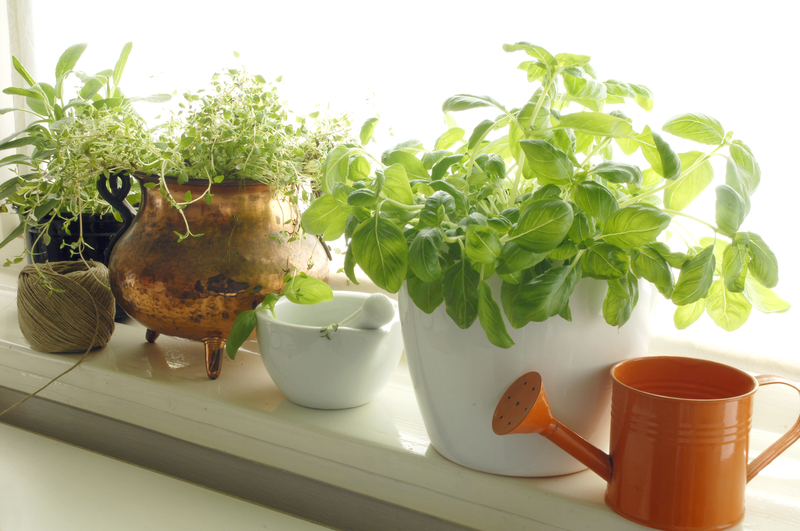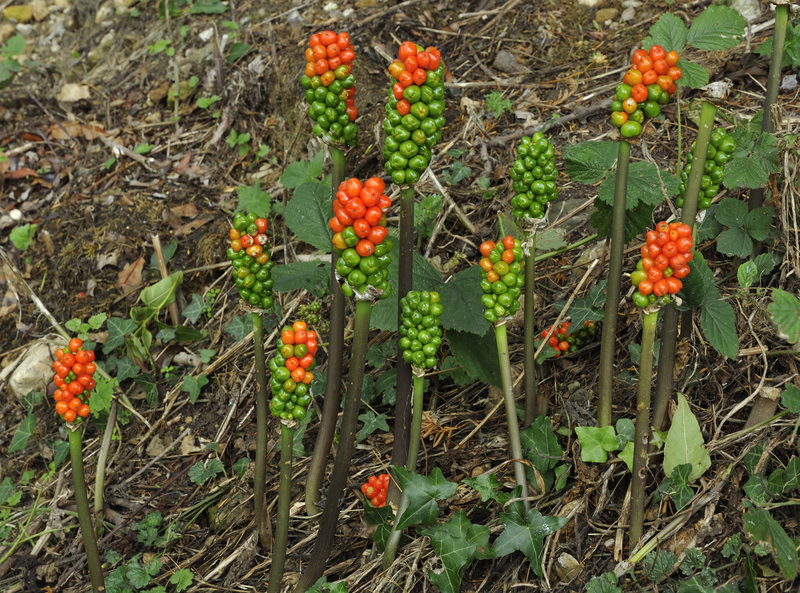Master the Delicate Art of Orchid Care
Posted on 31/08/2025
Master the Delicate Art of Orchid Care: A Comprehensive Guide
Orchids are among the most exquisite and storied blooms you can add to your indoor or outdoor garden. Their breathtaking appearance and enchanting diversity have inspired plant lovers for centuries. However, their reputation for being challenging can intimidate even experienced horticulturists. In this article, we'll reveal how you can master orchid care and keep your plants healthy, vibrant, and blooming year after year.
Understanding Orchids: More Than Just a Decorative Flower
The world of orchids is vast, with over 25,000 species and tens of thousands of hybrids. Their unique structures, fascinating pollination strategies, and varied origins contribute to their allure--and their specific care needs.
- Epiphytic orchids (like Phalaenopsis and Cattleya) grow on trees in the wild, not in soil.
- Terrestrial orchids thrive in the earth, more like typical houseplants.
- Orchid hybrids often blend the qualities of several species, making them perfect for novice growers.
Key takeaway: To master the art of orchid plant care, it is crucial to understand your orchid's type and its natural habitat.

The Essentials of Orchid Plant Care
While orchids have unique needs, they generally thrive with attention to these core elements:
1. Light: The Heartbeat of Your Orchid's Growth
- Bright but indirect sunlight is essential for most orchids.
- South or east-facing windows work best. Avoid harsh midday sun that can scorch leaves.
- Not enough light? Your orchid might grow lush leaves but never flower.
- Too much light leads to sunburned leaves--look for yellowing or blackened tips.
Expert tip: If natural light is insufficient, supplement with full-spectrum grow lights placed 12-18 inches above your orchid.
2. Watering Orchids: Avoid Overwatering at All Costs
- Overwatering is the number one killer of orchids.
- Most orchids prefer their roots to dry out between waterings.
- Water once the potting mix is almost dry, typically once a week.
- Use lukewarm, distilled, or rainwater for sensitive varieties.
- Never let orchids sit in water--this can cause root rot.
Pro tip: Stick your finger or a wooden skewer into the pot; if it comes out clean and dry, it's time to water.
3. Humidity: The Secret Ingredient for Healthy Orchids
- Orchids thrive in environments with 50-70% humidity.
- Use a humidity tray, room humidifier, or group plants together to increase moisture in the air.
- Misting can help, but avoid soaking the foliage as this risks fungal infections.
Monitor humidity with a simple hygrometer placed near your plants.
4. Temperature: Mimic Their Natural Habitat
- Most common orchids like Phalaenopsis prefer daytime temperatures between 65-80?F (18-27?C).
- Nighttime drops to 60-65?F (16-18?C) help stimulate blooming cycles.
- Avoid cold drafts, sudden temperature swings, and overheating near heaters.
5. Orchid Potting Mix and Repotting
- Never use regular potting soil! Orchids need special bark, sphagnum moss, or coconut husk-based mixes for proper aeration.
- Repot orchids every 1-2 years, preferably after blooming, to refresh the medium and check root health.
- Select well-draining orchid pots with ample drainage holes and side slits for airflow.
6. Feeding: Fertilize, But Don't Overdo It
- Feed orchids with a balanced fertilizer diluted to quarter or half strength.
- Fertilize every 2-4 weeks during active growth (spring and summer), reducing in fall and winter.
- Flush with clear water monthly to prevent fertilizer salt buildup and root burn.
Blooming Success: How to Encourage Orchids to Flower Again
One of the greatest joys in mastering orchid care is coaxing new blooms from your plant year after year. Here's how to support re-blooming:
1. Light and Darkness Cycles
- Orchids often need a difference between night and day temperatures to trigger flowering (especially Phalaenopsis and Cymbidiums).
- A period of 10-14 hours of darkness mimics natural seasons and spurs bud formation.
2. Rest and Repotting
- After flowering, cut the flower spike back just above a node to promote new side spikes (for Phalaenopsis).
- Allow a brief period of cool temperatures and less water to encourage a dormant rest, then resume normal care.
- Always repot if roots are crowded, brown, or mushy.
3. Supplement with Bloom-Boosting Fertilizer
- Switch to a "bloom" formula fertilizer high in phosphorus when flower stalks begin to develop.
Identifying and Solving Common Orchid Problems
Part of mastering orchid plant care is troubleshooting. Here are some common issues and how to fix them:
Yellow Leaves
- Can indicate overwatering, poor drainage, or excessive sunlight.
- Solution: Assess your watering routine and move the plant out of direct sun.
No Blooms
- Usually caused by insufficient light, improper temperature shifts, or lack of nutrients.
- Solution: Move to a brighter spot, provide a cool down especially at night, fertilize with bloom-boosting formulas.
Root Rot
- Characterized by mushy, brown roots and wilting blooms or leaves.
- Solution: Remove affected roots, repot in fresh, dry orchid mix, and adjust watering habits.
Pests and Diseases
- Common orchid pests include spider mites, aphids, mealybugs, and scale insects.
- Spot treat with insecticidal soap or neem oil and keep leaves clean by wiping with a damp cloth.
- Fungal issues thrive in humid, still conditions--improve air circulation and remove affected leaves quickly.
Choosing the Perfect Orchid for Your Home
Not all orchids have the same care requirements. When learning to master the art of orchid care, start with beginner-friendly varieties:
- Phalaenopsis (Moth Orchid): Easy to care for, forgiving, and flowers for months.
- Cattleya: Known for bright colors and fragrance, thrives with a bit more light.
- Dendrobium: Comes in many forms; prefers cooler conditions and a distinct seasonal rest.
- Oncidium (Dancing Lady): Spectacular sprays of flowers, rewards regular feeding and humidity.
If you're new to orchids, these varieties provide immediate success and the confidence to expand your collection.
Creating a Thriving Indoor Orchid Display
Orchids are more than botanical curiosities--they can become the centerpiece of your home's decor. Here's how to create a beautiful orchid display while maintaining proper orchid care:
Choose the Right Containers
- Clear plastic pots let you monitor root health but can be placed in decorative cachepots for style.
- Choose containers that promote drainage and airflow--roots like to breathe!
Design for Microclimates
- Cluster orchids with ferns or humidity-loving plants on trays filled with pebbles and water.
- Display near bright windows, but shield with sheer curtains to diffuse harsh sunlight.
Routine Maintenance: The Path to Orchid Mastery
- Regularly inspect for pests, disease, or changing light conditions.
- Remove faded blooms and dust leaves gently to maximize photosynthesis.
- Adapt your care throughout the year for seasonal shifts in temperature and humidity.
Advanced Orchid Care Tips: Take Your Skill to the Next Level
Ready to step up your orchid game? Here's how experienced growers keep their orchids thriving:
- Mount epiphytic orchids on bark slabs or wooden planks for a stunning natural display--mist daily to maintain moisture.
- Try water culture for certain Phalaenopsis: allow roots to soak in water for 2-3 days, then let them dry for 3-5 days in rotation. This demands regular monitoring to prevent rot.
- Breed your own hybrids by cross-pollinating your most beautiful specimens and sowing seeds--a deeply rewarding but challenging project for orchid care enthusiasts!
- Track your care routines and blooming cycles in a plant journal. This helps you learn each orchid's preferences and notice subtle signs before problems occur.

Conclusion: The Reward of Mastering Orchid Care
Orchids are living jewels, each with unique requirements and rich histories. By learning their needs and developing the patience to observe, adapt, and adjust, you'll move from orchid admirer to orchid master. With this comprehensive guide, you have everything needed to cultivate, nurture, and bloom your orchids with confidence and joy.
Embrace the journey, experiment with different orchids, and soon you'll see why orchid enthusiasts consider orchid care an art form worth mastering.
Frequently Asked Questions About Orchid Care
- How often should I water my orchid? Typically every 7-10 days, but always let the potting medium dry between waterings.
- Why are my orchid's leaves wrinkled or limp? This means the roots are either dehydrated (not enough water) or rotted (too much water). Check the roots and adjust your watering routine.
- Can I grow orchids outdoors? Yes! Many orchids thrive outdoors in tropical or subtropical regions. Always shield them from wind, harsh midday sun, and freezing temperatures.
- Do orchids need pruning? Remove spent flower spikes and dead or yellow leaves. Repot when roots crowd the container or the potting medium breaks down.
Now is the perfect time to begin your orchid care adventure. With the right techniques and a little patience, anyone can turn these elegant beauties into long-lasting, spectacular houseplants. Happy growing!
```


